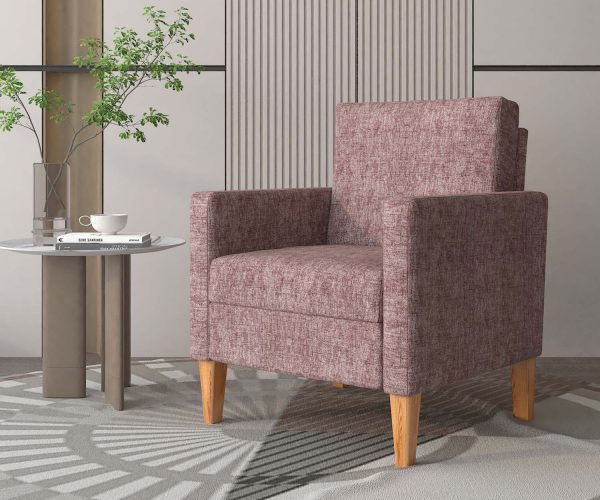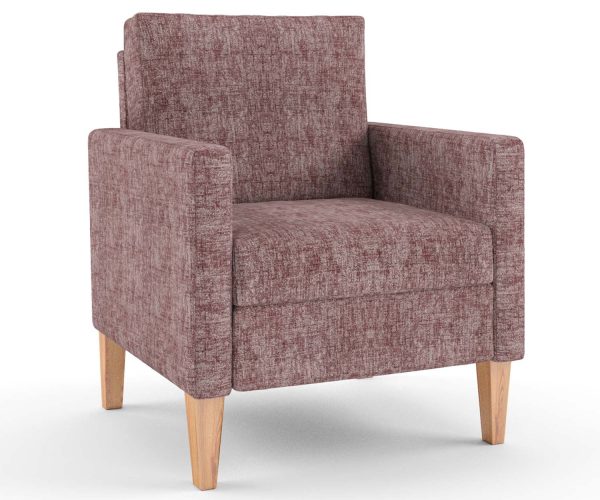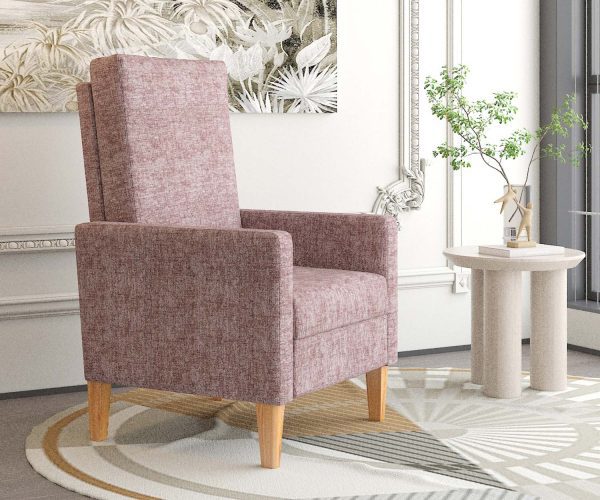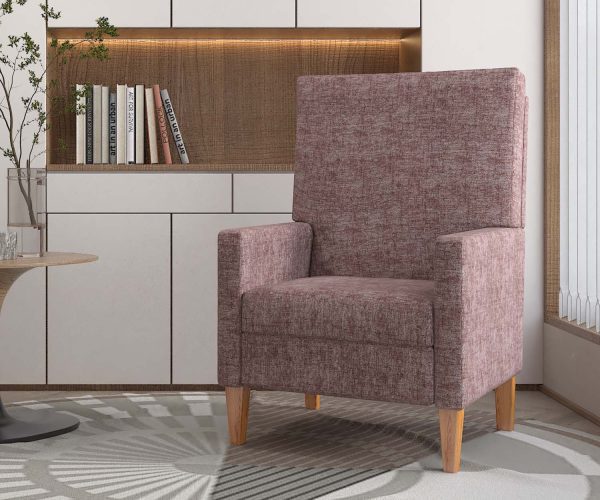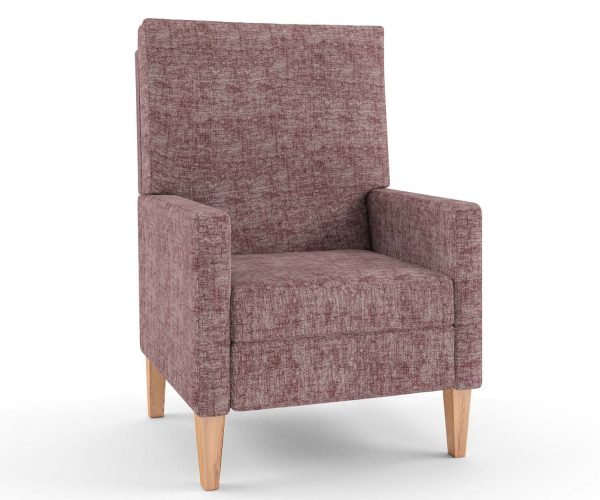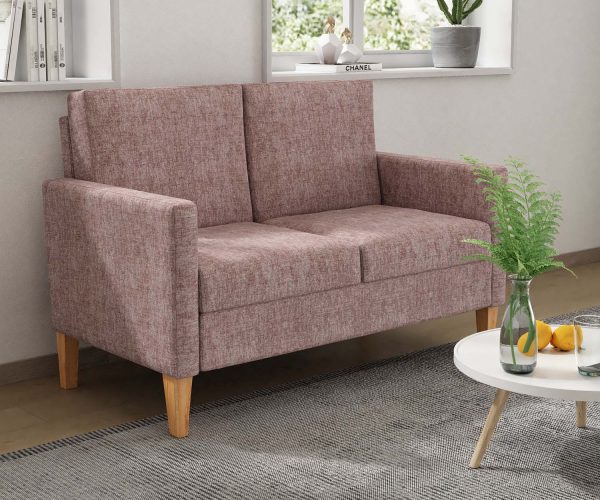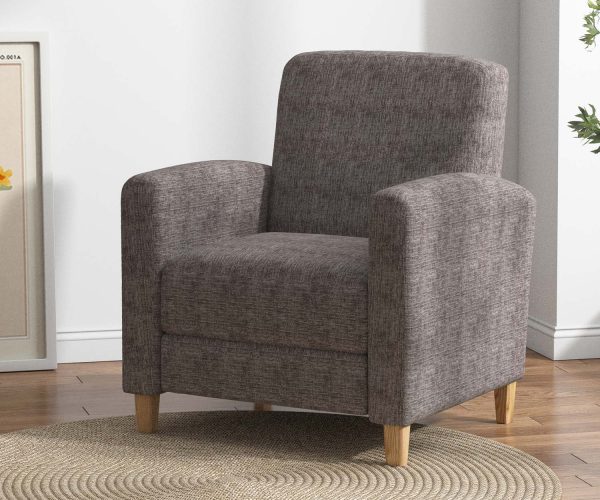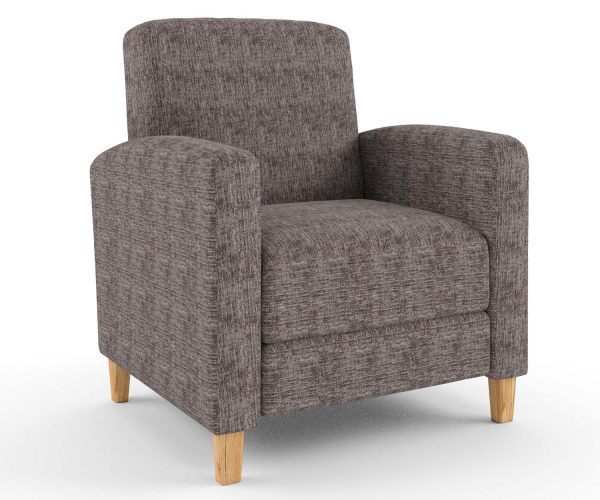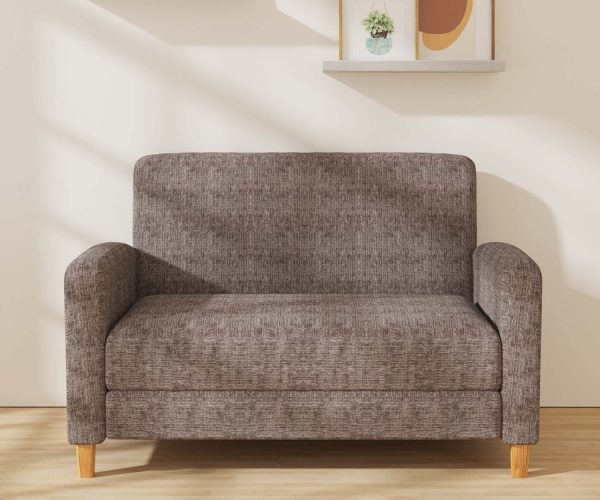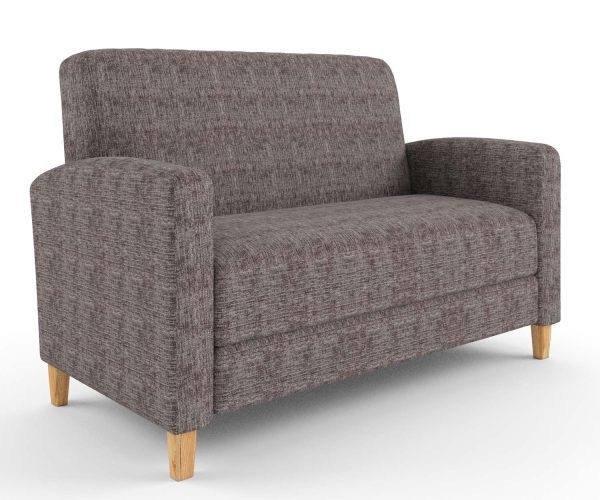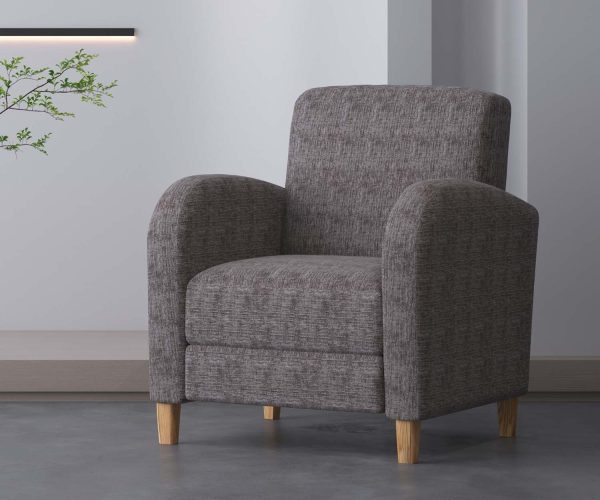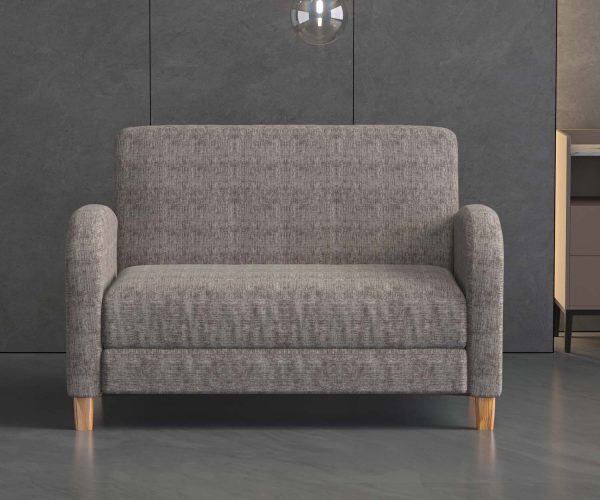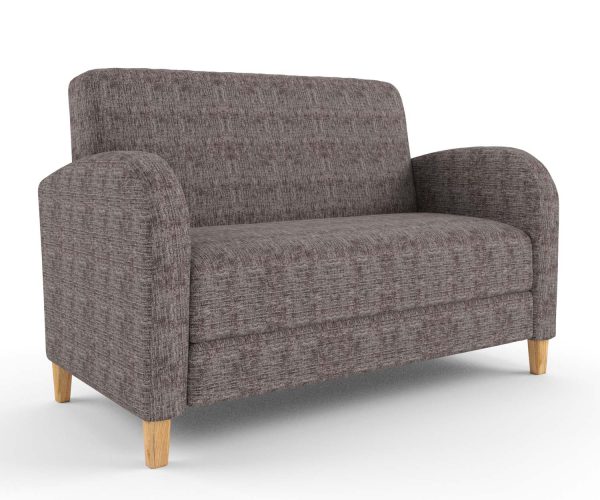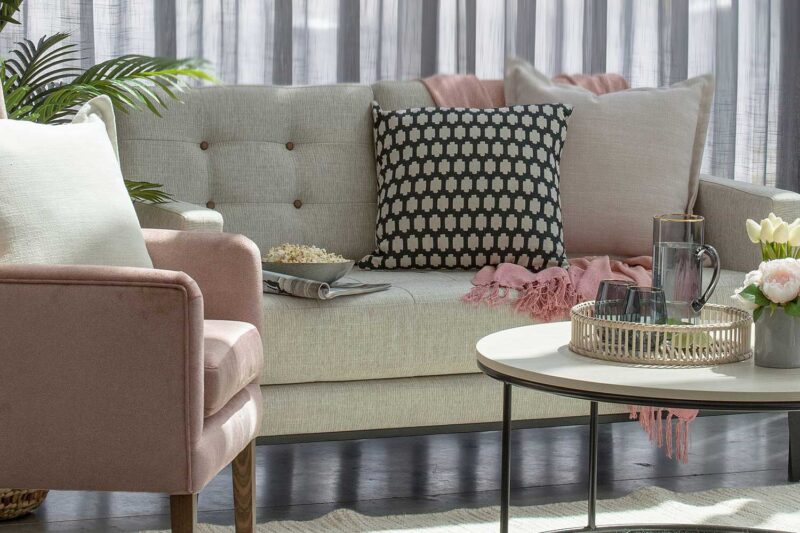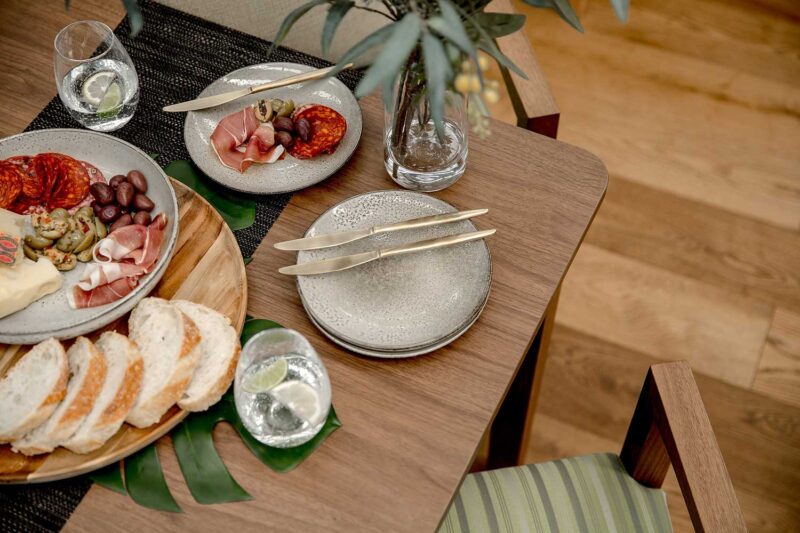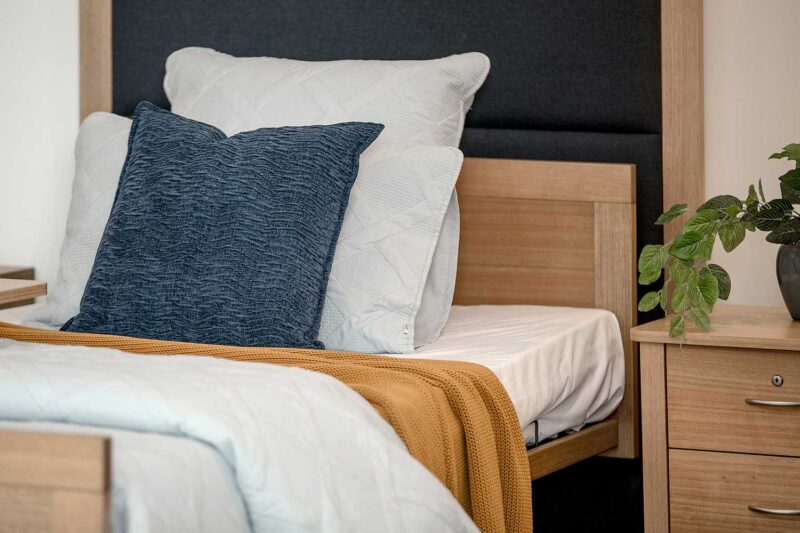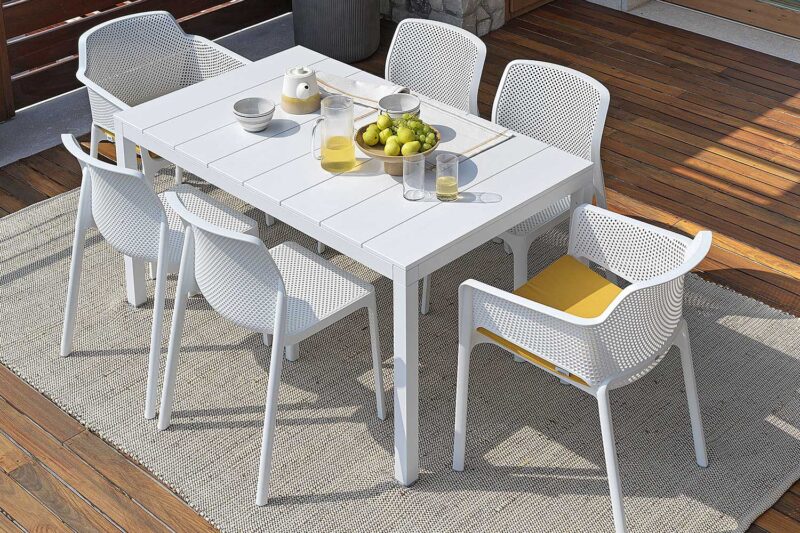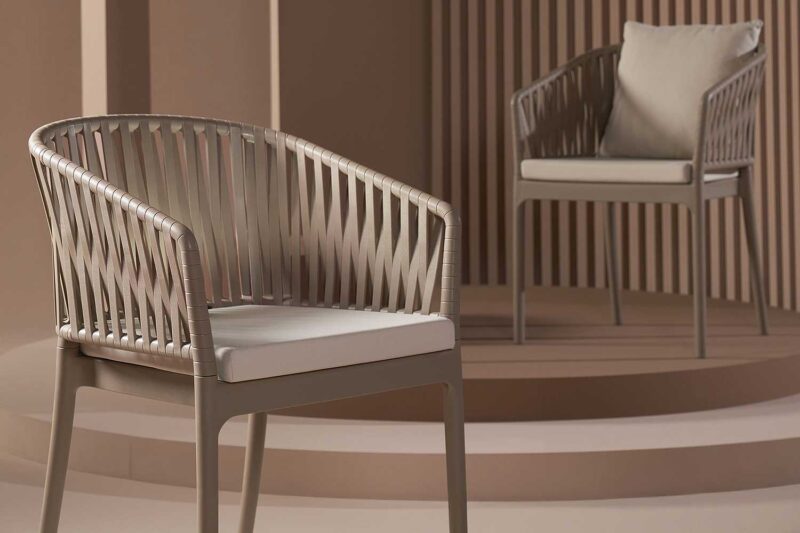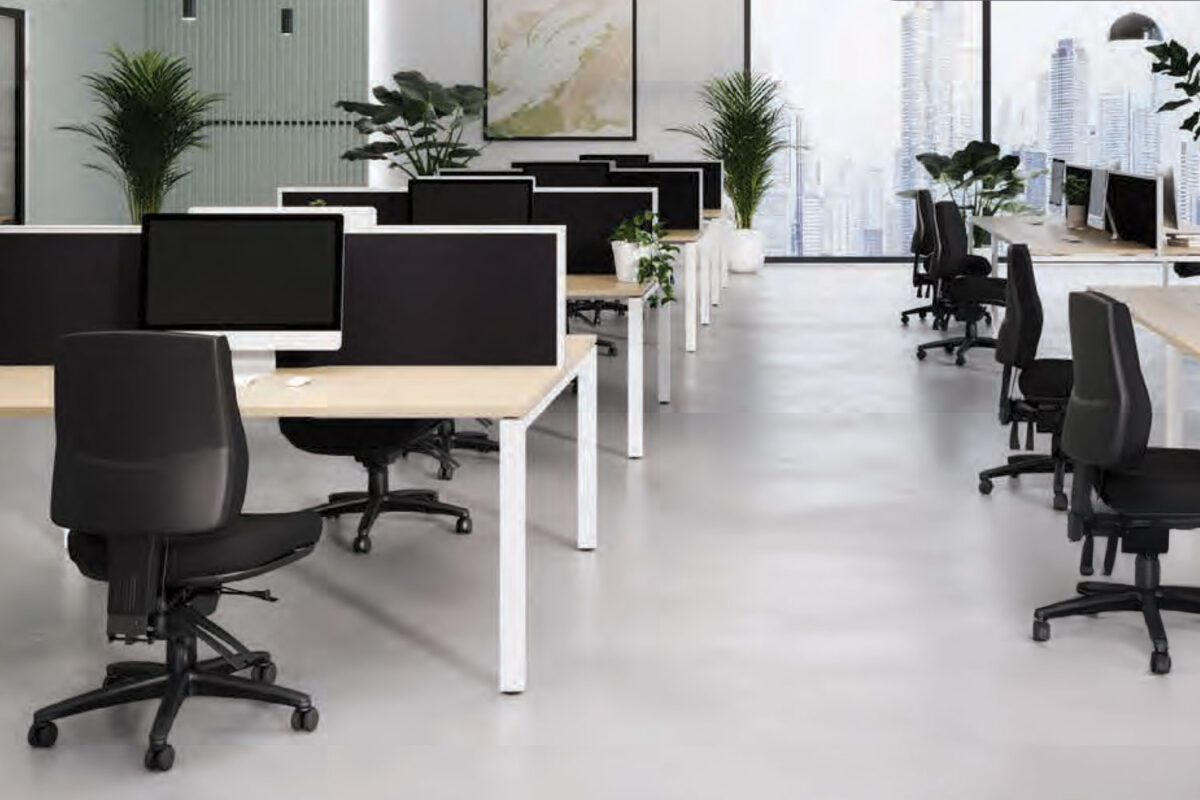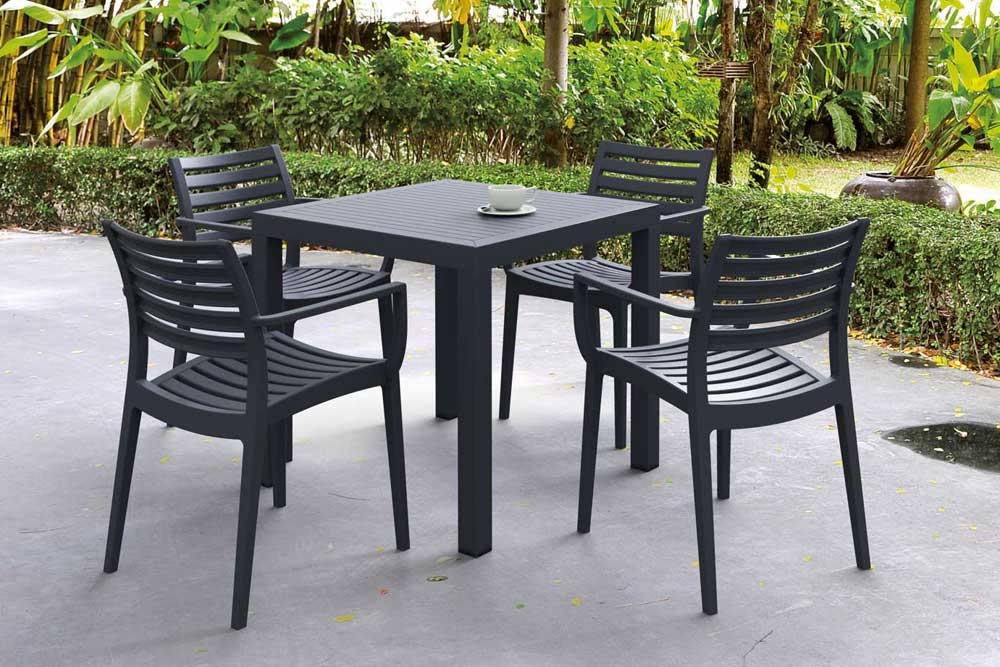Comfort, Compliance, and Care: Challenges and Solutions in Aged Care Furniture Management
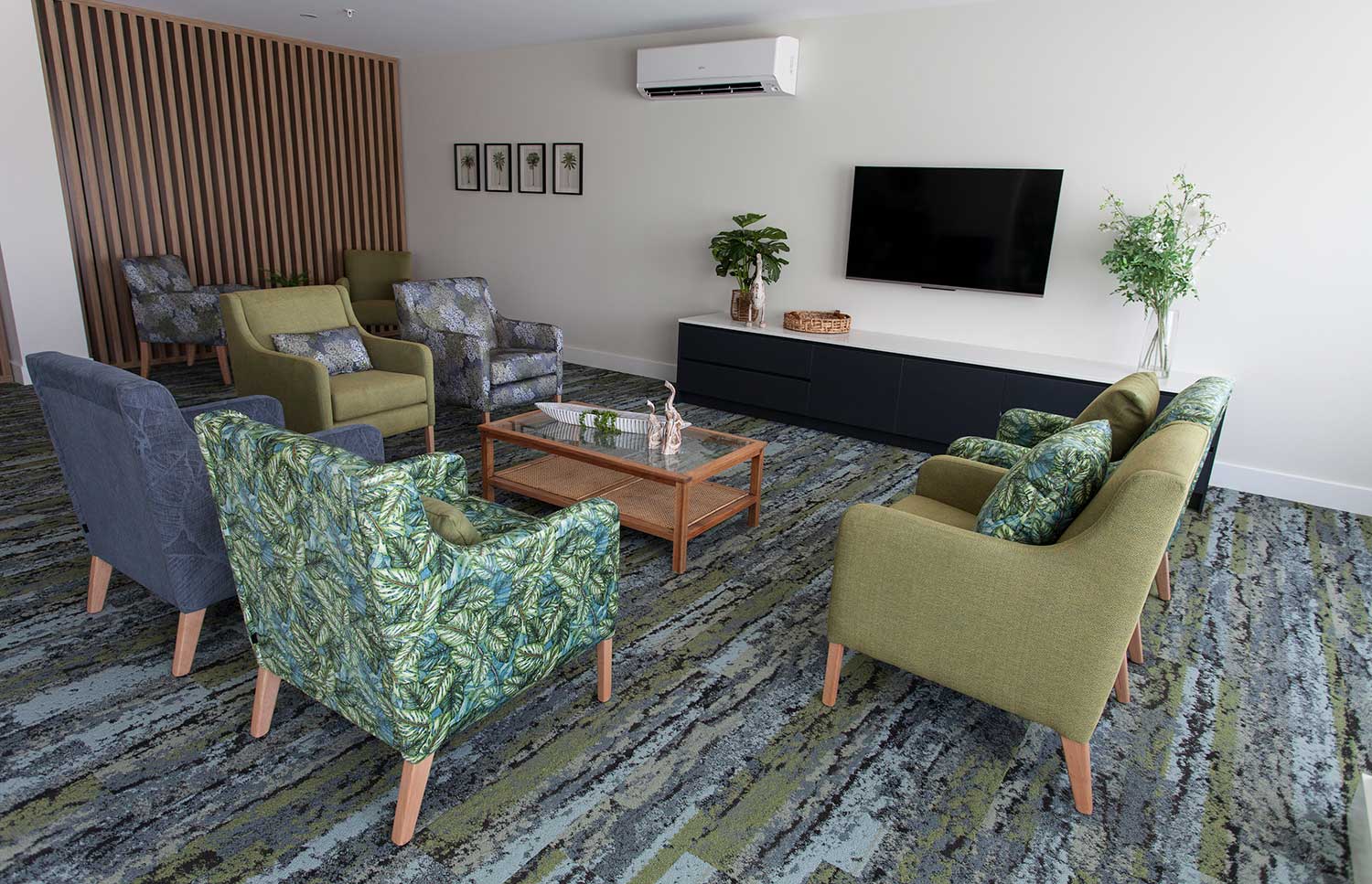
Aged care facilities play a crucial role in providing a comfortable and supportive service environment for elderly residents. Furniture, being an integral part of this equation, comes with its own set of challenges for facility managers. In this article, we delve into the triad of comfort, compliance, and care, exploring the daily hurdles faced in aged care furniture management and offering solutions for a more seamless experience.
The Comfort Conundrum
Challenge: Individualized Comfort Needs
One size does not fit all when it comes to elderly residents. Managing diverse comfort preferences and addressing specific health-related needs can be a daily challenge.
Solution: Personalized Furniture Assessments
In aged care facilities, personalized furniture assessments are a tailored approach to understanding and meeting the unique comfort and functional needs of each resident. This involves:
Understanding Individual Needs
- Mobility and Accessibility: Assess mobility levels and determine furniture arrangements that facilitate easy navigation.
- Posture and Support: Evaluate postural needs and provide specialized seating options for optimal comfort.
- Health Considerations: Take into account specific health conditions to customize furniture accordingly.
Conducting Comprehensive Assessments
- Regular Check-Ins: Implement regular assessments to address evolving needs and collaborate with healthcare professionals for expert input.
Investing in Adjustable and Customizable Furniture:
- Adjustable Beds and Chairs: Opt for adjustable features to allow residents to personalize their positions for comfort.
- Customizable Seating Options: Explore furniture options that can be customized based on individual preferences.
Feedback and Communication
- Resident Input: Actively seek resident and family input to understand preferences and concerns.
Continuous Improvement
- Feedback Loop: Establish a continuous feedback loop to address emerging needs and ensure ongoing satisfaction.
- Technology Integration: Explore smart furniture solutions for enhanced resident control over their living environment.
Personalized furniture assessments create living spaces that prioritize individual comfort and well-being, fostering an environment that truly feels like home for aged care residents.
Challenge: Aesthetic Appeal vs. Practicality
Balancing the desire for aesthetically pleasing spaces with the practicality of functional furniture can be tricky.
Solution: Harmonizing Form and Function
Creating a cohesive and functional environment in aged care facilities requires a thoughtful approach to furniture design. Harmonizing form and function involves:
Balancing Aesthetics and Practicality
- Design Expert Collaboration: Engage with interior designers for spaces that are visually appealing yet functional.
- Material Selection: Choose durable and easy-to-maintain materials that enhance aesthetics without compromising safety.
Innovative Design Solutions
- Multifunctional Furniture: Explore furniture that serves dual purposes, enhancing both form and function.
- Adaptable Configurations: Design flexible layouts to meet evolving resident needs.
Customization for Comfort
- Tailored Solutions: Implement customizable furniture to address individual preferences.
- Ergonomic Design: Prioritize ergonomic considerations for resident comfort and support.
Cultural Sensitivity
- Respecting Resident Backgrounds: Incorporate cultural sensitivity into design, creating a homely environment.
- Familiar Elements: Select furniture styles that reflect residents’ cultural backgrounds.
Sustainability and Longevity
- Investing in Quality: Prioritize quality over quantity for durable, visually cohesive spaces.
- Sustainable Practices: Integrate eco-friendly materials and designs for long-term well-being.
Harmonizing form and function in aged care furniture ensures that living spaces are not only visually pleasing but also contribute to the residents’ overall well-being.
Navigating Compliance Complexities
Challenge: Regulatory Compliance
Aged care facilities must adhere to stringent regulations and standards. Ensuring that furniture meets safety and hygiene standards can be a complex task.
Solution: Stay Informed and Collaborate
In the dynamic world of aged care furniture management, staying compliant with regulations is crucial. Here’s a concise guide:
Keeping Up with Regulations
- Continuous Learning: Stay updated on furniture-related regulations through workshops and industry events.
- Regular Audits: Conduct frequent audits to identify and address compliance issues promptly.
Collaboration Strategies
- Engaging with Experts: Collaborate with regulatory experts and industry peers to gain insights and perspectives.
- Supplier Communication: Communicate compliance expectations clearly with furniture suppliers and inquire about their adherence to industry standards.
Staff Training and Documentation
- Regular Staff Training: Implement routine training programs for staff, ensuring awareness of compliance protocols.
- Documentation Practices: Establish clear documentation procedures for furniture purchases, maintenance, and assessments.
Quality Assurance Measures
- Internal Checks: Institute regular internal quality checks to maintain a high standard of compliance.
- Post-Purchase Evaluations: Evaluate new furniture additions post-purchase to ensure immediate compliance.
Continuous Improvement
- Feedback Systems: Encourage feedback from staff and residents, fostering a culture of continuous improvement.
- Adaptation to Changes: Stay adaptable to regulatory changes, adjusting practices and furniture selections accordingly.
By integrating these practices, aged care facilities can navigate regulatory complexities efficiently, ensuring the safety and well-being of residents while maintaining a reputation for high-quality care.
Challenge: Infection Control
Maintaining a clean and hygienic environment is paramount. Furniture can be a breeding ground for germs, posing a risk to residents.
Solution: Easy-to-Clean Furniture Options
Maintaining a clean and hygienic environment is paramount in aged care facilities. Choosing easy-to-clean furniture is key for visual appeal and resident health:
Material Selection
- Non-Porous Surfaces: Opt for furniture with non-porous surfaces, like laminates, for easy wipe-down and disinfection.
- Antimicrobial Fabrics: Consider furniture with antimicrobial fabrics to resist bacterial growth and enhance infection control.
Seamless Designs
- Minimize Seams: Choose furniture with seamless designs to reduce germ-harboring crevices.
- Avoid Cloth Upholstery: Prefer furniture with minimal cloth upholstery or options with replaceable, washable covers.
Modularity and Maintenance
- Modular Furniture: Select modular pieces for easier cleaning and potential component replacements.
- Replaceable Covers: Choose furniture with replaceable covers, facilitating more frequent washing.
Cleaning Protocols
- Compatibility with Cleaning Agents: Ensure furniture is compatible with various cleaning agents, following manufacturer guidelines.
- Regular Cleaning Schedules: Integrate furniture cleaning into regular schedules to maintain hygiene standards.
Resident-Friendly Solutions
- Comfort and Practicality: Prioritize furniture that balances ease of cleaning with resident comfort.
- Transparent Communication: Communicate cleaning procedures transparently to build resident trust and awareness.
Staff Training
- Regular Training Sessions: Provide staff with regular training on effective cleaning practices.
- Incorporate Cleaning into Schedules: Integrate furniture cleaning into routine schedules to ensure consistency.
By incorporating these strategies, aged care facilities can uphold cleanliness standards, fostering a healthy and comfortable living environment for residents.
The Care Continuum
Challenge: Staff Training and Awareness
Ensuring that staff is well-versed in adjusting and using specialized furniture to meet residents’ needs can be an ongoing challenge.
Solution: Regular Training Programs
Regular training programs are instrumental in equipping aged care staff with the skills and knowledge needed for optimal furniture management. Here’s a concise breakdown:
Understanding Furniture Features
- Ergonomics and Adjustability: Train staff on customizing furniture for residents’ comfort and using specialized equipment.
- Safety Protocols: Provide instruction on fall prevention and emergency procedures, ensuring staff can prioritize resident safety.
Hygiene and Infection Control
- Cleaning Techniques: Instruct staff on proper cleaning techniques to maintain a hygienic living environment.
- Identifying Infection Risks: Educate staff on recognizing infection risks and implementing proactive measures.
Resident-Centric Approach
- Effective Communication: Develop communication skills for discussing furniture preferences and comfort needs with residents.
- Cultural Competency: Integrate training on cultural sensitivity in furniture choices to align with residents’ preferences.
Adaptability and Flexibility
- Reconfiguring Spaces: Train staff on adapting furniture arrangements to changing resident needs.
- Problem-Solving Skills: Instill problem-solving skills to address unexpected challenges in furniture management.
Compliance and Regulations
- Awareness of Regulations: Keep staff informed on furniture-related regulations and compliance standards.
- Documentation Practices: Train staff on accurate documentation practices for maintenance, adjustments, and replacements.
Continuous Learning Culture
- Encourage Feedback: Foster open communication and feedback channels for continuous improvement.
- Professional Development: Provide ongoing professional development opportunities, including workshops and resources.
By condensing and focusing on these essential elements, aged care facilities can ensure that staff are well-prepared to manage furniture effectively, enhancing resident care and facility operations.
Challenge: Emergency Preparedness
In emergency situations, the layout and arrangement of furniture can impact evacuation procedures and resident safety.
Solution: Emergency Drills and Adaptive Designs
Ensuring safety in aged care facilities involves integrating emergency drills and adopting adaptive furniture designs. Here’s a concise guide:
Emergency Drills
- Evacuation Procedures: Train staff to quickly evacuate residents, considering furniture obstacles.
- Communication Protocols: Emphasize clear communication during emergencies for efficient coordination.
Adaptive Designs
- Wheelchair Accessibility: Ensure furniture layouts accommodate easy wheelchair accessibility.
- Modular Furniture Options: Invest in modular furniture for swift adjustments during emergencies.
Collaboration with Emergency Services
- Engage Emergency Services: Collaborate with local services to incorporate expertise into drills.
- Scenario-Based Training: Conduct scenario-based training, simulating various emergency situations.
Resident-Centric Approaches
- Communication with Residents: Train staff to communicate effectively with residents during drills.
- Individualized Plans: Develop personalized emergency plans for residents based on their needs.
Technology Integration
- Smart Furniture Solutions: Explore smart furniture with adjustable settings for quick adaptations.
- Communication Systems: Implement systems connecting different facility sections for efficient coordination.
Regular Review and Improvement
- Post-Drill Evaluation: Analyze drill effectiveness and identify areas for improvement.
- Continuous Training Updates: Keep emergency response training updated with evolving facility layouts.
By integrating these practices, aged care facilities can enhance emergency preparedness, ensuring the safety and well-being of residents with efficient furniture management.
In conclusion, the challenges in aged care furniture management are diverse, but strategic solutions exist to navigate them successfully. By prioritizing comfort, compliance, and care, aged care facility managers can create environments that promote the well-being of residents and enhance their overall quality of life. The journey toward effective furniture management is a continuous one, with the ultimate goal of providing a home where residents feel secure, cared for, and comfortable.
Australian Made Aged Care Furniture
We take pride in crafting high-quality aged care furniture in Australia, characterized by meticulous craftsmanship and durable materials, ensuring both functionality and aesthetic appeal.
More News
Comfort, Compliance, and Care: Challenges and Solutions in Aged Care Furniture Management

Aged care facilities play a crucial role in providing a comfortable and supportive service environment for elderly residents. Furniture, being an integral part of this equation, comes with its own set of challenges for facility managers. In this article, we delve into the triad of comfort, compliance, and care, exploring the daily hurdles faced in aged care furniture management and offering solutions for a more seamless experience.
The Comfort Conundrum
Challenge: Individualized Comfort Needs
One size does not fit all when it comes to elderly residents. Managing diverse comfort preferences and addressing specific health-related needs can be a daily challenge.
Solution: Personalized Furniture Assessments
In aged care facilities, personalized furniture assessments are a tailored approach to understanding and meeting the unique comfort and functional needs of each resident. This involves:
Understanding Individual Needs
- Mobility and Accessibility: Assess mobility levels and determine furniture arrangements that facilitate easy navigation.
- Posture and Support: Evaluate postural needs and provide specialized seating options for optimal comfort.
- Health Considerations: Take into account specific health conditions to customize furniture accordingly.
Conducting Comprehensive Assessments
- Regular Check-Ins: Implement regular assessments to address evolving needs and collaborate with healthcare professionals for expert input.
Investing in Adjustable and Customizable Furniture:
- Adjustable Beds and Chairs: Opt for adjustable features to allow residents to personalize their positions for comfort.
- Customizable Seating Options: Explore furniture options that can be customized based on individual preferences.
Feedback and Communication
- Resident Input: Actively seek resident and family input to understand preferences and concerns.
Continuous Improvement
- Feedback Loop: Establish a continuous feedback loop to address emerging needs and ensure ongoing satisfaction.
- Technology Integration: Explore smart furniture solutions for enhanced resident control over their living environment.
Personalized furniture assessments create living spaces that prioritize individual comfort and well-being, fostering an environment that truly feels like home for aged care residents.
Challenge: Aesthetic Appeal vs. Practicality
Balancing the desire for aesthetically pleasing spaces with the practicality of functional furniture can be tricky.
Solution: Harmonizing Form and Function
Creating a cohesive and functional environment in aged care facilities requires a thoughtful approach to furniture design. Harmonizing form and function involves:
Balancing Aesthetics and Practicality
- Design Expert Collaboration: Engage with interior designers for spaces that are visually appealing yet functional.
- Material Selection: Choose durable and easy-to-maintain materials that enhance aesthetics without compromising safety.
Innovative Design Solutions
- Multifunctional Furniture: Explore furniture that serves dual purposes, enhancing both form and function.
- Adaptable Configurations: Design flexible layouts to meet evolving resident needs.
Customization for Comfort
- Tailored Solutions: Implement customizable furniture to address individual preferences.
- Ergonomic Design: Prioritize ergonomic considerations for resident comfort and support.
Cultural Sensitivity
- Respecting Resident Backgrounds: Incorporate cultural sensitivity into design, creating a homely environment.
- Familiar Elements: Select furniture styles that reflect residents’ cultural backgrounds.
Sustainability and Longevity
- Investing in Quality: Prioritize quality over quantity for durable, visually cohesive spaces.
- Sustainable Practices: Integrate eco-friendly materials and designs for long-term well-being.
Harmonizing form and function in aged care furniture ensures that living spaces are not only visually pleasing but also contribute to the residents’ overall well-being.
Navigating Compliance Complexities
Challenge: Regulatory Compliance
Aged care facilities must adhere to stringent regulations and standards. Ensuring that furniture meets safety and hygiene standards can be a complex task.
Solution: Stay Informed and Collaborate
In the dynamic world of aged care furniture management, staying compliant with regulations is crucial. Here’s a concise guide:
Keeping Up with Regulations
- Continuous Learning: Stay updated on furniture-related regulations through workshops and industry events.
- Regular Audits: Conduct frequent audits to identify and address compliance issues promptly.
Collaboration Strategies
- Engaging with Experts: Collaborate with regulatory experts and industry peers to gain insights and perspectives.
- Supplier Communication: Communicate compliance expectations clearly with furniture suppliers and inquire about their adherence to industry standards.
Staff Training and Documentation
- Regular Staff Training: Implement routine training programs for staff, ensuring awareness of compliance protocols.
- Documentation Practices: Establish clear documentation procedures for furniture purchases, maintenance, and assessments.
Quality Assurance Measures
- Internal Checks: Institute regular internal quality checks to maintain a high standard of compliance.
- Post-Purchase Evaluations: Evaluate new furniture additions post-purchase to ensure immediate compliance.
Continuous Improvement
- Feedback Systems: Encourage feedback from staff and residents, fostering a culture of continuous improvement.
- Adaptation to Changes: Stay adaptable to regulatory changes, adjusting practices and furniture selections accordingly.
By integrating these practices, aged care facilities can navigate regulatory complexities efficiently, ensuring the safety and well-being of residents while maintaining a reputation for high-quality care.
Challenge: Infection Control
Maintaining a clean and hygienic environment is paramount. Furniture can be a breeding ground for germs, posing a risk to residents.
Solution: Easy-to-Clean Furniture Options
Maintaining a clean and hygienic environment is paramount in aged care facilities. Choosing easy-to-clean furniture is key for visual appeal and resident health:
Material Selection
- Non-Porous Surfaces: Opt for furniture with non-porous surfaces, like laminates, for easy wipe-down and disinfection.
- Antimicrobial Fabrics: Consider furniture with antimicrobial fabrics to resist bacterial growth and enhance infection control.
Seamless Designs
- Minimize Seams: Choose furniture with seamless designs to reduce germ-harboring crevices.
- Avoid Cloth Upholstery: Prefer furniture with minimal cloth upholstery or options with replaceable, washable covers.
Modularity and Maintenance
- Modular Furniture: Select modular pieces for easier cleaning and potential component replacements.
- Replaceable Covers: Choose furniture with replaceable covers, facilitating more frequent washing.
Cleaning Protocols
- Compatibility with Cleaning Agents: Ensure furniture is compatible with various cleaning agents, following manufacturer guidelines.
- Regular Cleaning Schedules: Integrate furniture cleaning into regular schedules to maintain hygiene standards.
Resident-Friendly Solutions
- Comfort and Practicality: Prioritize furniture that balances ease of cleaning with resident comfort.
- Transparent Communication: Communicate cleaning procedures transparently to build resident trust and awareness.
Staff Training
- Regular Training Sessions: Provide staff with regular training on effective cleaning practices.
- Incorporate Cleaning into Schedules: Integrate furniture cleaning into routine schedules to ensure consistency.
By incorporating these strategies, aged care facilities can uphold cleanliness standards, fostering a healthy and comfortable living environment for residents.
The Care Continuum
Challenge: Staff Training and Awareness
Ensuring that staff is well-versed in adjusting and using specialized furniture to meet residents’ needs can be an ongoing challenge.
Solution: Regular Training Programs
Regular training programs are instrumental in equipping aged care staff with the skills and knowledge needed for optimal furniture management. Here’s a concise breakdown:
Understanding Furniture Features
- Ergonomics and Adjustability: Train staff on customizing furniture for residents’ comfort and using specialized equipment.
- Safety Protocols: Provide instruction on fall prevention and emergency procedures, ensuring staff can prioritize resident safety.
Hygiene and Infection Control
- Cleaning Techniques: Instruct staff on proper cleaning techniques to maintain a hygienic living environment.
- Identifying Infection Risks: Educate staff on recognizing infection risks and implementing proactive measures.
Resident-Centric Approach
- Effective Communication: Develop communication skills for discussing furniture preferences and comfort needs with residents.
- Cultural Competency: Integrate training on cultural sensitivity in furniture choices to align with residents’ preferences.
Adaptability and Flexibility
- Reconfiguring Spaces: Train staff on adapting furniture arrangements to changing resident needs.
- Problem-Solving Skills: Instill problem-solving skills to address unexpected challenges in furniture management.
Compliance and Regulations
- Awareness of Regulations: Keep staff informed on furniture-related regulations and compliance standards.
- Documentation Practices: Train staff on accurate documentation practices for maintenance, adjustments, and replacements.
Continuous Learning Culture
- Encourage Feedback: Foster open communication and feedback channels for continuous improvement.
- Professional Development: Provide ongoing professional development opportunities, including workshops and resources.
By condensing and focusing on these essential elements, aged care facilities can ensure that staff are well-prepared to manage furniture effectively, enhancing resident care and facility operations.
Challenge: Emergency Preparedness
In emergency situations, the layout and arrangement of furniture can impact evacuation procedures and resident safety.
Solution: Emergency Drills and Adaptive Designs
Ensuring safety in aged care facilities involves integrating emergency drills and adopting adaptive furniture designs. Here’s a concise guide:
Emergency Drills
- Evacuation Procedures: Train staff to quickly evacuate residents, considering furniture obstacles.
- Communication Protocols: Emphasize clear communication during emergencies for efficient coordination.
Adaptive Designs
- Wheelchair Accessibility: Ensure furniture layouts accommodate easy wheelchair accessibility.
- Modular Furniture Options: Invest in modular furniture for swift adjustments during emergencies.
Collaboration with Emergency Services
- Engage Emergency Services: Collaborate with local services to incorporate expertise into drills.
- Scenario-Based Training: Conduct scenario-based training, simulating various emergency situations.
Resident-Centric Approaches
- Communication with Residents: Train staff to communicate effectively with residents during drills.
- Individualized Plans: Develop personalized emergency plans for residents based on their needs.
Technology Integration
- Smart Furniture Solutions: Explore smart furniture with adjustable settings for quick adaptations.
- Communication Systems: Implement systems connecting different facility sections for efficient coordination.
Regular Review and Improvement
- Post-Drill Evaluation: Analyze drill effectiveness and identify areas for improvement.
- Continuous Training Updates: Keep emergency response training updated with evolving facility layouts.
By integrating these practices, aged care facilities can enhance emergency preparedness, ensuring the safety and well-being of residents with efficient furniture management.
In conclusion, the challenges in aged care furniture management are diverse, but strategic solutions exist to navigate them successfully. By prioritizing comfort, compliance, and care, aged care facility managers can create environments that promote the well-being of residents and enhance their overall quality of life. The journey toward effective furniture management is a continuous one, with the ultimate goal of providing a home where residents feel secure, cared for, and comfortable.
Australian Made Aged Care Furniture
We take pride in crafting high-quality aged care furniture in Australia, characterized by meticulous craftsmanship and durable materials, ensuring both functionality and aesthetic appeal.
Discover the FHG Look Book: Your Source of Inspiration for Quality Australian-Made Commercial Furniture
- Quality Craftsmanship: See why we’ve been a trusted partner for over 25 years.
- Local Excellence: Learn how our Brisbane team ensures the highest standards.
- Inspiration and Ideas: Find innovative furniture solutions for any environment.
Don’t miss the opportunity to transform your commercial space with FHG’s expertly crafted furniture. Download the FHG Look Book today and start your journey towards exceptional design and quality.

